The Naval Petroleum and Oil Shale Reserves -
90 Years of Ensuring the National Security
By 1910, the U.S. Navy was rapidly converting from coal to oil-burning ships. Concern arose for an assured supply of oil in the event of war or a national emergency.
|

The U.S.S. Colorado, Maryland, and West Virginia off the coast of California during the 1920's. The West Virginia was one of the first oil-burning ships.
|
|
 Sailor tightens oil refueling coupling onboard the U.S.S. New Mexico, circa 1919. Sailor tightens oil refueling coupling onboard the U.S.S. New Mexico, circa 1919.

Clamshell buckets transfer coal from collier to fighting ships.
|
The Pickett Act of 1910 authorized the President to withdraw large areas of potential oil-bearing lands in California and Wyoming as sources of fuel for the Navy. On July 2, 1910, President Taft set aside federal lands believed to contain oil as an emergency reserve.
 |
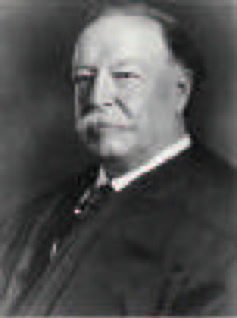 |
|
President William Howard Taft | "As not only the largest owner of oil lands, but as a prospective large consumer of oil by reason of the increasing use of fuel oil by the Navy, the Federal Government is directly concerned both in encouraging rational development and at the same time insuring the longest possible life to the oil supply."
Message to Congress by President Taft, December 6, 1910.
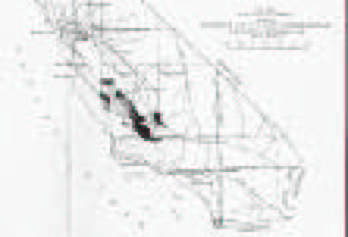
Oil Land Withdrawals, 1916
Within the next fifteen years, the properties that make up the Naval Petroleum and Oil Shale Reserves (NPOSR) were brought under the NPOSR umbrella. This included the Naval Petroleum Reserves 1, 2, and 3 plus the Naval Oil Shale Reserves 1, 2, and 3. The Naval Petroleum Reserve Number 4, on the north slope of Alaska, was added in 1923.
The Reserves were initially under the control of the Department of the Interior (DOI), but in 1920 the U.S. Navy's Fuel Oil Office assumed responsibility for the Reserves. A year later, President Warren Harding placed the Reserves back under the DOI, only to have the Teapot Dome Scandal force control back to the Navy.
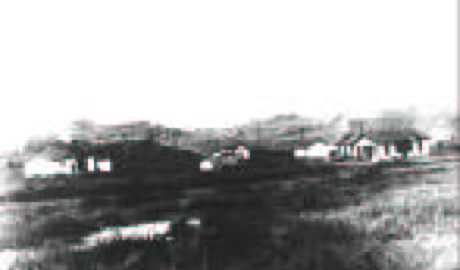 |
|
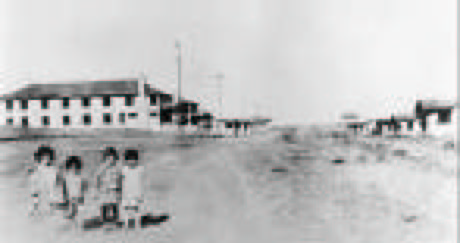 |
|
Teapot Dome, 1927
|
|
Mammoth Oil Company main camp dormitories and family dwellings. Teapot Dome, 1927 |
In 1927, the first Office of the Naval Petroleum and Oil Shale Reserves was officially created in the U.S. Navy and the Reserves had an official name. The U.S. Navy maintained ownership of the Reserves until the transfer by the Department of Energy Organization Act of 1977 to the U.S. Department of Energy.
Set aside as a reserve and not for production, the Reserves sat idle (not producing oil for the government) for many years. NPR-2 and NPR-3 each had leases allowing commercial oil companies to drill for and produce oil and gas. NPR-1 did not have any leases, although Standard Oil Company did own and operate drilling and production operations on its lands, which due to the checkerboard nature of Elk Hills, were among the sections owned by the government.
At the onset of World War II, the United States foresaw a critical need for oil production for war time needs; therefore, production began at NPR-1.
 "You are authorized to proceed immediately with negotiations toward the purchase, if possible, of all lands lying within the geologic structure in which naval petroleum reserve No. 1 is located." "You are authorized to proceed immediately with negotiations toward the purchase, if possible, of all lands lying within the geologic structure in which naval petroleum reserve No. 1 is located."
Letter from President Roosevelt
to the Secretary of Navy, March 21, 1942
On October 15, 1942, President Roosevelt signed an Executive Order enlarging the limits of the Reserve. As a result, a Unit Plan Contract with Standard Oil was signed allowing the entire field to be run in an equitable manner, with both the government and Standard sharing the profits and costs. Final settlement of the UPC is still going on today.
NPR-3, on the other hand, was shut-in during the war years as a result of the Teapot Dome Scandal and would not open up again until 1958. Production at Elk Hills (NPR-1) was shut-in at the conclusion of the Second World War, but production from the Shallow Oil Zone continued in order to satisfy debts and obligations owed to Standard.
|
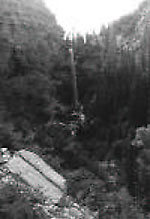
Parachute Falls
|
|

Anvil Points Oil Shale Research and Development Facility (NOSR-3) Rifle, Colorado. President Wilson established in December 1916 a 45-acre Naval Oil Shale Reserve in Colorado and a 87 acre Naval Oil Shale Reserve in Utah. All of the early field research in oil shale occurred between 1920 and 1982. In 1985-87 Anvil Points was decommissioned and the land returned to its natural state by NPOSR.
|
|

Red Adair, legendary oil field fire fighter, extinguishes a well fire at Elk Hills, October 27, 1977.
|
|

President Gerald R. Ford confers with
Commander Roger Martin, Director,
NPR-California, during the "Open Up"
at Elk Hills, 1976.
|
On April 5, 1976, President Ford signed into law, the Naval Petroleum Reserves Production Act as a result of the oil shortages created by the Arab Oil embargo of 1973-74. Referred to as the "Open Up" legislation, this law enabled the Naval Petroleum Reserves to operate in a production mode rather than a conservation mode. The NPRs would never be shut in again.
Just a little over a year later, on August 4, 1977, President Jimmy Carter signed the Department of Energy Organization Act which transferred the NPOSR to the U.S. Department of Energy. Even though the U.S. Navy no longer controlled the Reserves, a Navy Captain from the Civil Engineering Corps (the SeaBees) would direct the program for the next twenty years. Navy Lieutenants from the SeaBees would be on the engineering staffs at both the California and Wyoming sites.
At its peak in July 1981, NPR-1 produced 181,000 barrels of oil per day. Thousands of employees, both federal and mostly contractors, have worked at the sites. If NPR-1 had been a commercial oil field and not a government reserve, it would rank as one of the top ten largest oil fields in the lower 48 States in the production of oil and gas.
In the Defense Authorization Act of 1996, the U.S. Department of Energy was directed to sell the assets of NPR-1. Occidental Petroleum Company submitted the winning bid of $3.65 billion dollars and on February 5, 1998, took over ownership and operation of Elk Hills.
 |
|
|
Secretary of Energy Bill Richardson |
| Secretary Richardson transferred deed of Naval Oil Shale Reserve No. 2 in Utah to the Ute Indian Tribe on December 4, 2000. This was the last and largest of the three Oil Shale Reserves administered by the Naval Petroleum and Oil Shale Reserves.
NOSRs-1 and 3 have been transferred to the U.S. Department of the Interior.
|